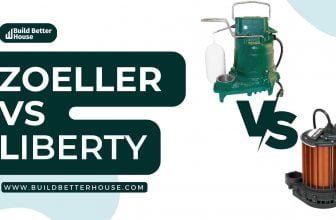What Size Dehumidifier Do I Need: Choosing the Right One for Your Space

Dehumidifiers play a crucial role in maintaining a comfortable and healthy living environment by removing excess moisture from the air. This, in turn, helps prevent the growth of mold, mildew, and allergens, which can negatively affect your health and the structural integrity of your home. However, choosing the right size dehumidifier for your space is essential, as every room might have various moisture removal needs.
Understanding how dehumidifiers work will allow you to accurately assess your environment’s needs and determine the most suitable model for your circumstances. The size of your room, as well as the temperature and humidity levels, will greatly influence the type and capacity of the dehumidifier you should choose. Additionally, considering factors such as performance, price, and additional features can help you make an informed decision and ensure your investment in a dehumidifier yields long-lasting benefits.

Key Takeaways
- Selecting the right size dehumidifier is essential for optimal performance and energy efficiency
- Consider factors such as room size, temperature, and humidity levels when choosing a dehumidifier
- Research available options, read reviews, and consult professionals to ensure you make an informed decision
Understanding Dehumidifiers
Dehumidifiers play a vital role in maintaining a comfortable and healthy environment in your home or office. High humidity levels can cause mold, mildew, allergens, and dampness, which may lead to various health issues. By understanding how dehumidifiers work and their importance, you can make an informed decision when choosing the right size dehumidifier for your needs.
A dehumidifier works by extracting moisture from the air, reducing the humidity levels in the room. The device consists of a fan that pulls in the humid air, and condenser coils that cool the air and collect the water droplets. The dry air is then released back into the room, while the collected moisture is either stored in a reservoir or drained through a hose.
When selecting a dehumidifier, consider the size of the space you want to dehumidify and your specific needs. It’s essential to choose a model with the appropriate capacity to effectively remove moisture from the air without causing excessive energy consumption. Dehumidifiers come in various sizes and capacities, measured in pints per day (PPD), which indicates how much moisture the unit can remove in 24 hours.
Here are some general guidelines for choosing a dehumidifier based on room size:
- Small spaces (up to 500 square feet): A dehumidifier with a capacity of 10 to 16 PPD
- Medium spaces (500 to 1,000 square feet): A dehumidifier with a capacity of 17 to 20 PPD
- Large spaces (1,000 to 2,000 square feet): A dehumidifier with a capacity of 21 to 30 PPD
- Extra-large spaces (2,000+ square feet): A dehumidifier with a capacity of 31+ PPD
These recommendations should serve as a starting point, but it’s crucial to consider factors such as the degree of dampness, local climate, and room usage. For instance, if your space is particularly humid or experiences frequent dampness, selecting a dehumidifier with a higher capacity is advisable.
Assessing Your Needs
Before choosing the right dehumidifier size for your space, it’s crucial to assess your needs. Consider the size of the room or area you want to dehumidify, the level of dampness, and the presence of mold, mildew, or musty odors.
Start by identifying the location where you plan to use the dehumidifier. Common areas with high humidity and potential mold growth include basements, bathrooms, laundry rooms, and crawl spaces. Observe the space for signs of dampness, such as condensation on windows, doors, and walls. Mold or mildew may be visible, or you might detect a musty odor.
Measure the size of the room, as the capacity of a dehumidifier is determined by the amount of space it can effectively cover. Dehumidifiers are rated in pints of water removed per day, as established by the U.S. Department of Energy’s (DOE) testing standards. Larger rooms or areas with high humidity levels may require a dehumidifier with a higher pint capacity.
Next, consider the noise level and electricity consumption of the dehumidifier. Smaller dehumidifiers can be quieter and more energy-efficient, while larger units may have higher noise levels and consume more electricity. Remember that a dehumidifier will need to be emptied regularly, so take note of its tank capacity and choose a model that meets your maintenance preferences.
In addition, assess the need for any additional features like a built-in humidistat, which allows you to set a target humidity level, or integrated HVAC systems that aid in maintaining optimal indoor air quality. Desiccant dehumidifiers may be useful in colder environments where refrigerant-based models struggle to operate efficiently. Finally, decide whether a portable or whole-house dehumidifier better suits your needs.
By carefully evaluating the size of the space, the severity of dampness or mold, and the desired features of the dehumidifier, you can confidently select the right size and model to effectively control the humidity in your home, ensuring a comfortable and healthy living environment.
Determining Dehumidifier Size
To determine the right dehumidifier size for your space, first calculate the square footage of the area you want to dehumidify. Measure the length and width of the room, then multiply those numbers together to get the square footage. For example, a 12- by 12-foot room will have a square footage of 144 feet.
Next, it’s crucial to understand the dampness level in the area. You can use a hygrometer, a device that measures relative humidity, for this purpose. Knowing the relative humidity will help you choose the correct capacity for your dehumidifier. Dehumidifier capacity is typically measured in pints, representing the amount of moisture it can remove in 24 hours.
Here’s a general dehumidifier sizing chart to help you choose the right size based on square footage and dampness levels:
| Room Size (sq. ft.) | Moderately Damp (45-50% RH) | Very Damp (50-60% RH) | Possibly Wet (60-70% RH) | Wet (70-80% RH) |
|---|---|---|---|---|
| 500 | 10 pints | 12 pints | 14 pints | 16 pints |
| 1000 | 14 pints | 17 pints | 20 pints | 23 pints |
| 1500 | 18 pints | 22 pints | 26 pints | 30 pints |
| 2000 | 22 pints | 27 pints | 32 pints | 37 pints |
This chart is a starting point, but every situation is unique. Factors such as room layout, airflow, and local climate can impact dehumidifier performance. Additionally, if multiple rooms require dehumidification, adjust your capacity accordingly or consider using multiple units.
Keep in mind that selecting a larger dehumidifier won’t necessarily lead to better results. Oversized units may cycle on and off too frequently, making it challenging to maintain stable relative humidity levels. Using a dehumidifier sizing calculator or consulting with a professional can help you find the ideal size for your specific needs.
Types of Dehumidifiers
When choosing a dehumidifier, it’s essential to understand the different types available to find the right one for your needs.
Whole-house dehumidifiers are installed within your home’s HVAC system and designed to control humidity levels throughout the entire house. These units are ideal for larger homes or those with excessive humidity and ensure consistent indoor air quality.
Portable dehumidifiers are smaller units, easy to move from room to room as needed. These are perfect for targeting specific areas or rooms with high humidity levels, such as basements, closets, or bathrooms.
Mini dehumidifiers are compact, lightweight, and ideal for smaller spaces or areas wherein a larger unit is not practical. They are commonly used in cupboards, wardrobes, or smaller rooms, like single bedrooms and bathrooms.
Desiccant dehumidifiers use a chemical called desiccant to absorb moisture from the air. These units are most effective in cooler environments, as they don’t rely on a compressor to function. They tend to be on the quieter side and require less power.
Thermo-electric dehumidifiers use the Peltier effect to condense moisture from the air, making them energy-efficient and almost silent during operation. They are suitable for smaller areas and have no moving parts, offering a longer lifespan.
Electric dehumidifiers use a compressor and refrigeration system to remove moisture from the air. They are generally more powerful than thermo-electric or desiccant models, making them an excellent choice for larger spaces or rooms with significantly high humidity levels.
Remember to factor in the size of the space you wish to dehumidify and the humidity level (RH) to select the right type of dehumidifier that meets your needs. With these options in mind, you can confidently choose the appropriate dehumidifier for your home and enjoy a more comfortable living environment.
Effect of Temperature and Humidity
When choosing the right size dehumidifier, it’s crucial to consider the effects of temperature and humidity levels on your space. This will not only ensure comfort but also prevent harmful mold growth and maintain good air quality in your home.
Temperature and humidity play a significant role in how a dehumidifier functions. Higher humidity levels combined with warmer temperatures can lead to increased moisture in the air, making it necessary to use a larger dehumidifier to effectively combat dampness. Conversely, colder temperature and lower humidity require smaller dehumidifiers to maintain an optimal environment.
Here are some general guidelines depending on the wetness of your space:
- Moderately damp: If you notice a musty odor in your room when it’s humid, you might need a small dehumidifier. For every 500 square feet, a 10-pint capacity is recommended.
- Wet space: If your space consistently feels damp with damp spots on the ceiling, walls, or floors, you’ll likely need a medium-sized dehumidifier. For every 500 square feet, add a capacity of 4 extra pints.
- Extremely wet space: If your area is consistently wet, perhaps with visible mold or water on the floor, you will require a large dehumidifier to effectively remove moisture. In this case, the capacity should be even greater than the guidelines for a wet space.
Always consider your specific situation when choosing a dehumidifier. Keep in mind the size and layout of the space, as well as variations in weather and humidity levels throughout the year. By doing so, you’ll ensure that your dehumidifier is the right fit and can effectively maintain a healthy and comfortable environment.
Capacity and Performance
When it comes to selecting the right size dehumidifier for your needs, understanding its capacity and performance is crucial. Dehumidifier capacity is measured in pints, referring to the amount of moisture the appliance can remove from the air within a 24-hour period. Common capacities include 30-pint, 50-pint, and 70-pint models, with each size designed to accommodate varying room sizes and humidity levels.
A 30-pint dehumidifier is ideal for small to medium spaces, such as a home office or a garage with moderate humidity. These units can efficiently remove moisture from the air, helping maintain a comfortable environment while using less energy compared to larger models.
For larger rooms or areas with higher humidity, a 50-pint dehumidifier is more suitable. This size is perfect for large basements or living spaces where moisture removal is essential to prevent mold and mildew growth. These dehumidifiers can efficiently handle the increased moisture levels commonly found in larger, damp areas.
In cases of extremely high humidity or significantly larger spaces, a 70-pint dehumidifier is the best option. These powerful units can quickly and effectively remove large amounts of moisture per day, ensuring your space remains dry and comfortable even in the most challenging conditions.
No matter which size you choose, it’s important to look for a dehumidifier with an Energy Star rating, as this certification indicates the appliance has met stringent energy efficiency standards set by the U.S. Department of Energy. Energy-efficient models not only help you save on energy costs, but they also protect the environment by reducing greenhouse gas emissions.
To accurately determine the appropriate dehumidifier size for your space, consider using a hygrometer. This device measures the humidity level in your room, allowing you to select the most effective dehumidifier capacity for your specific needs. Remember, the right dehumidifier capacity will not only improve your home’s comfort but also contribute to its long-term efficiency and structural integrity.
Additional Considerations
When choosing a dehumidifier, consider these factors to better fit your needs:
Cost: Dehumidifiers come in a range of prices, with various features and capacities. Determine your budget and find a model that fits within the price range while meeting your requirements.
Drainage: Some models have a built-in drain pump or come with a gravity drainage option, allowing continuous operation without having to empty the water tank. If this is important to you, look for models with these features.
Room conditions: Consider the humidity level, room size, and temperature in the area you want to dehumidify. Use a hygrometer to measure the room’s relative humidity and choose a dehumidifier suitable for the room conditions.
Areas of Usage:
- Kitchen: Heavy appliances and steam from cooking can increase humidity. Opt for a dehumidifier specifically designed for use in the kitchen.
- Bedrooms: You might prioritize a quiet, energy-efficient unit that won’t disturb your sleep or cause distractions.
- Living room: A quieter, efficient, and aesthetically pleasing model is ideal for shared living spaces.
- Closet: Compact, wall-mounted dehumidifiers are perfect for small spaces like closets or laundry rooms.
Appliances: If your home has moisture-generating appliances such as washing machines or clothes dryers, consider a unit that can accommodate these conditions.
Features: Look for energy-efficient models, adjustable humidity settings, timers, and auto shut-off functions to suit your preferences.
Noise level: Dehumidifiers can produce noise during operation, so choose a model with a low noise level if it will be placed in areas where silence is important.
Remember to choose a dehumidifier that fits your specific needs and offers the best combination of performance, features, and cost-effective operation.
Professional Help and Reviews
When choosing a dehumidifier, it’s important to seek professional help and consult reviews to make an informed decision. Dehumidifiers play a crucial role in maintaining a healthy living and working environment, as they help reduce allergens, bacteria, and even deter pests like roaches in your interior space.
Consumer Reports is a reliable source for finding information about dehumidifier sizing, features, and performance. They offer valuable tips and a sizing chart to help you determine the right dehumidifier for your needs, along with rated dehumidifiers based on their performance. By referring to expert reviews and recommendations, you can feel confident in selecting a dehumidifier that suits your requirements.
Another helpful source for reviews is Wirecutter, which provides top picks for dehumidifiers based on thorough testing. Some recommended models include the Midea 50 Pint Cube, the Frigidaire Gallery FGAC5044W1, and the Frigidaire FFAD2233W1 for smaller spaces. These reviews offer insights into the pros and cons, features, and performance of each dehumidifier.
Bob Vila is yet another excellent resource for reviews, especially when looking for a dehumidifier suitable for crawl spaces. Their top picks, including the AlorAir 113-Pint Commercial Dehumidifier and the GE 22-Pint Portable Dehumidifier with Smart Dry, can be excellent choices for tackling high humidity in crawl spaces or basements.
In case you live in a humid climate, you may consider investing in a whole-house dehumidifier. Some options, like Home Depot’s offerings, can be portable appliances or integrated directly into your HVAC system. A whole-house dehumidifier can help maintain the ideal humidity levels throughout your home during both summer and winter months.
Remember, when selecting a dehumidifier, it is essential to consider your specific needs. By consulting professional help and reviews, you can make an informed choice that effectively reduces humidity, allergens, and bacteria in your living and working spaces.
Frequently Asked Questions
How do I determine the right dehumidifier size?
To determine the right dehumidifier size for your needs, consider the square footage of the area you want to dehumidify and the level of moisture present. Generally, a higher pint capacity means the dehumidifier can cover a larger area and remove more moisture.
Which dehumidifier size is suitable for a 1000 sq ft area?
For a 1000 sq ft area, a 40-60-pint capacity dehumidifier would be suitable. This size can handle rooms between 1,000-2,500 square feet, depending on moisture levels.
What dehumidifier size is needed for a 2000 sq ft house?
A large 60+ pint capacity dehumidifier would be needed for a 2000 sq ft house, as this size is designed to tackle areas of 2,500 square feet and up. However, if you need to dehumidify the entire house, consider a non-portable device placed in a central location.
How do I choose a dehumidifier for a 1-bedroom flat?
When choosing a dehumidifier for a 1-bedroom flat, consider the overall square footage of the flat and the moisture levels. A 34-40-pint capacity dehumidifier is typically suitable for areas between 500-1,500 square feet.
What’s the best dehumidifier size for a basement?
Basements tend to have higher moisture levels due to their location. When selecting the right dehumidifier for your basement, consider both its size and humidity level. A larger capacity dehumidifier, like a 60 or 70-pint unit, is usually more effective for damp basements.
How much coverage does a 70-pint dehumidifier provide?
A 70-pint dehumidifier typically provides coverage for areas up to 2,500 square feet or more, depending on moisture levels present. This size is ideal for larger spaces with higher humidity levels or for whole-house dehumidification.






